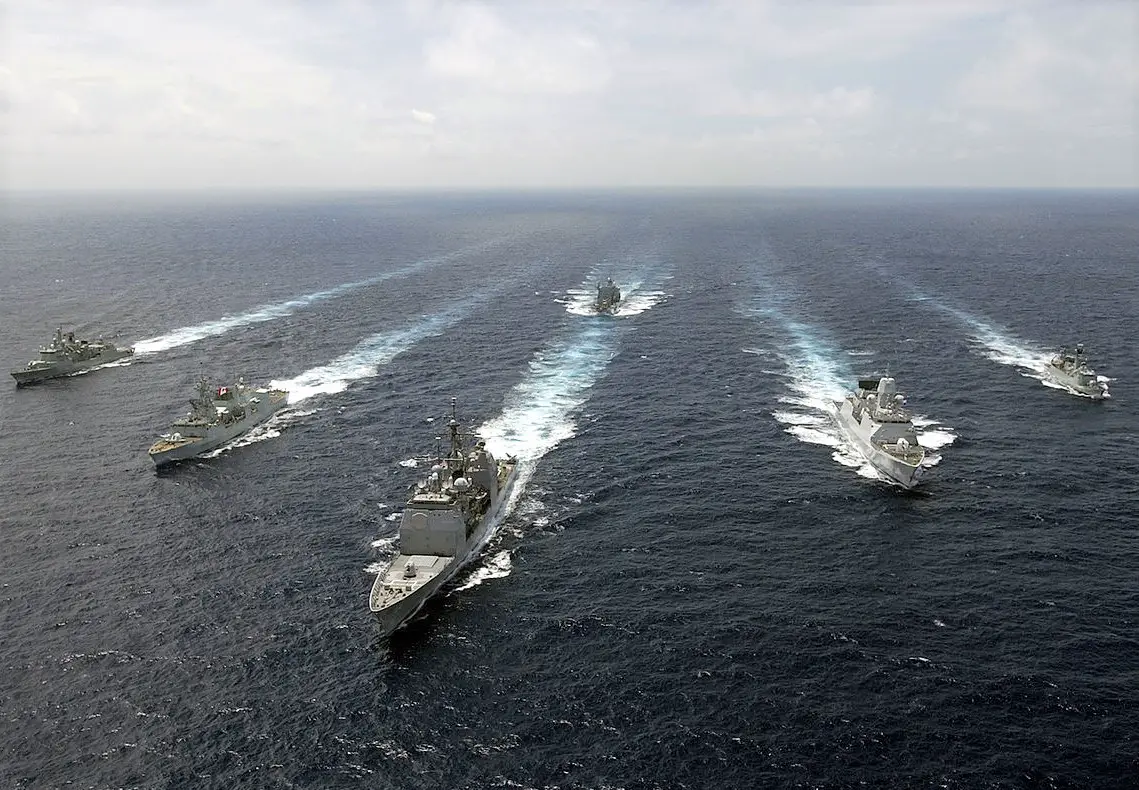Breaking news
New project helps NATO talk with non-NATO organizations at sea.
Allied Maritime Command (MARCOM) asked the NATO Communications and Information (NCI) Agency to find a way to make it easier for the Alliance's maritime assets to exchange unclassified information with outside organizations on a 24/7 basis. The Agency delivered in April a public cloud-based solution to allow NATO and non-NATO organizations and vessels to share maritime awareness information on an easily-accessible platform.
 "With this new capability, NATO has unlocked the ability to share information easily with non-NATO partners at sea. Cloud-based solutions are the key to building NATO's future: a future that is smarter, faster and more collaborative than ever before," said Detlef Janezic, Chief Service Engineering and Architecture at the NCI Agency (Picture source: Wikimedia)
"With this new capability, NATO has unlocked the ability to share information easily with non-NATO partners at sea. Cloud-based solutions are the key to building NATO's future: a future that is smarter, faster and more collaborative than ever before," said Detlef Janezic, Chief Service Engineering and Architecture at the NCI Agency (Picture source: Wikimedia)
"The project is a perfect example of how the NCI Agency was able to quickly tailor a commercial off-the-shelf solution towards an operational command such as the Allied Maritime Command, and effectively improve our ability to enhance maritime situational awareness overnight," said Christopher Smith, a Navy Signals Engineer in MARCOM. "As COVID-19 impacted our way of working towards the end of the project, we found this new tool to be even more necessary than previously envisioned."
NATO and non-NATO organizations alike can access the platform using any internet-connected device. "With this new capability, NATO has unlocked the ability to share information easily with non-NATO partners at sea. Cloud-based solutions are the key to building NATO's future: a future that is smarter, faster and more collaborative than ever before," said Detlef Janezic, Chief Service Engineering and Architecture at the NCI Agency.
This platform will be used for the first time for the Mediterranean area and 50 possible users have already been identified. "This is a fantastic result, and we expect use of the platform to grow over time as new maritime communities are incorporated," said Jose Luis Herrero Pascual, Head of Service Engineering at the NCI Agency. Herrero Pascual looks for new technologies that can be applied to solve customers' problems.
While deployed, NATO will sometimes establish contacts with non-NATO entities such as Nations, shipping companies, and Non-Governmental Organizations (NGOs). Before this technology was delivered, however, the command could only do so on an ad-hoc basis because there was not a common platform for everyone to share information.
For example, in the past NATO executed an operation focused on combating piracy. If at the time, an NGO monitoring the situation had discovered that a commercial vessel had been hijacked, it could have used such a platform to let NATO know. Sending NATO that information quickly could have given the Alliance an opportunity to take quick action.
To make that kind of communication possible, the NCI Agency proposed a cloud-based platform to give people the tools they would find in an office on land, such as chat, email and document collaboration. "The secret to the success of this project was the participation of all the actors needed, from the technical perspective to that of the users," said LCDR Giampietro Lungarella, A Navy Signals Cyberspace Requirement and Project Officer for MARCOM.
Security concerns were a big part of the Agency's rationale for choosing the new industry solution. Though NATO has some networks of a low-level classification, they are not considered suitable for supporting operations. The Agency chose a subscription that would offer the maximum number of security features, Herrero Pascual said. The solution also needed to address a problem common to the maritime environment: low bandwidth.
The platform the Agency chose will enable people on board a vessel to continue to work even when the connection doesn't hit the minimum bandwidth. They will be able to continue to work offline, and the data will be synchronized when the ship finds a better connection.
Although this is a commercial off-the-shelf solution, it needed some adjustments to make it fit for NATO use. As Project Manager, CPT Gary Cataldo in Core Enterprise Services at the Agency coordinated, monitored and executed those adjustments.
"We are taking this as a blueprint project, as a way to show that for a certain number of scenarios we can use public cloud solutions," CPT Cataldo said. "This kind of exchange of information with non-military actors can be done through a public cloud solution."

























